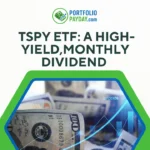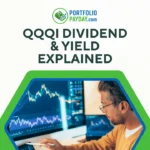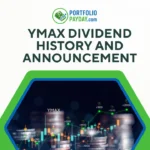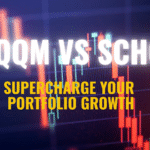Disclaimer: The following is for informational purposes only and not financial advice. Always do your own due diligence. I am not a licensed advisor.
Nvidia Stock Split History and Insights: A Look at Its Impact on Prices
Nvidia, a leader in the tech industry, has become synonymous with innovation, especially in the world of AI and gaming. For investors, the company’s stock history is a tale of growth, splits, and strategic moves designed to enhance shareholder value. If you’ve been watching Nvidia’s meteoric rise over the years, you may have noticed that stock splits are a recurring theme. But what do these stock splits mean for the average investor? Let’s take a deep dive into Nvidia’s stock split history, what happens before and after a split, and why it matters to both new and seasoned investors.
The Beginnings: Nvidia’s First Stock Split
Nvidia’s journey with stock splits began back in the early 2000s, during a period of tremendous growth. The first stock split took place in 2000, followed by another in 2001. The price trends before and after these splits showed an upward trajectory, signaling investor confidence. While it’s tempting to think of stock splits as a sign of a company’s slowing down, the truth is quite the opposite. Nvidia’s stock splits were, in fact, a reflection of a healthy and thriving company.
A Closer Look at NVDA Stock Split History
Over the years, Nvidia has split its stock multiple times, each time sparking renewed interest among investors. Let’s break down the history of Nvidia’s stock splits:
1. 2000 Stock Split: The Price Surge Before and After
In the year 2000, Nvidia’s stock was trading at a price that seemed high for many retail investors. But when the stock split occurred, the cost per share adjusted, making it more accessible. The trend before the stock split saw a steady rise, and after the split, the stock continued its upward climb. From $58 at the top to $61 at the bottom, it was clear that the split had a positive impact on the stock’s price.
2. 2006 Stock Split: A Similar Pattern Emerges
Another split in 2006 continued to showcase Nvidia’s resilience. Before the split, the price jumped from $54 to $61. After the split, the price movement remained relatively flat. This suggested that while the split didn’t cause massive growth immediately, it stabilized the stock, making it more attractive to a larger pool of investors.
3. 2007 Stock Split: A Slight Dip After the Surge
In 2007, Nvidia once again split its stock, but this time, there was a slight dip post-split. The price rose before the split, from $48 to $52, but after the split, it briefly dropped. Despite this short-term dip, the company’s long-term growth trajectory remained intact. This highlights an important lesson: while short-term fluctuations can occur, stock splits do not alter the overall health of a company.
4. 2021 Stock Split: A Game-Changer for Retail Investors
The 2021 stock split was the latest in Nvidia’s history, and it made headlines for its massive impact. With a 4-for-1 split ratio, Nvidia’s stock price was reduced from a hefty $796 to around $195. Before the split, the stock price surged from $800 to over $previous0, only to decrease after the split, stabilizing around the $195 mark. For retail investors, this split made Nvidia stock far more accessible, unlocking new opportunities for those who had previously found the price too high.

The Future of NVDA Stock Splits: Will They Continue?
As of 2024, Nvidia’s stock has once again caught the attention of investors, especially after a dramatic price surge in 2023. Many are asking: Will Nvidia continue to split its stock? Analysts have speculated that future splits could be on the horizon, especially if the company continues its robust growth in AI and other high-demand sectors. Whether it’s a 5-for-1 or a 10-for-1 split, one thing is clear: Nvidia’s stock splits are likely to remain a key part of its growth strategy.
Should You Buy Nvidia Before or After the Split?
This leads to a common question: Should you buy Nvidia stock before or after a split? The answer depends on your investment strategy. Historically, Nvidia’s stock tends to rise before and after stock splits, though there are periods of volatility. The stock split makes the stock more affordable for smaller investors, opening the door for a broader range of people to buy shares.
The Psychological Impact of Stock Splits
A stock split, while not affecting a company’s fundamentals, often has a psychological impact. Investors feel that they are getting more for their money. In the case of Nvidia, a lower price point post-split can trigger a surge in demand, making the stock more liquid and easier to trade. That’s why Nvidia’s stock splits often come with positive sentiment and a rise in stock price, at least in the short term.

The Benefits of Stock Splits for Retail Investors
Stock splits are not just beneficial for large institutional investors—they’re great for retail investors too. The lower price points after a stock split make it easier for everyday investors to buy shares, especially those who may not have the capital to purchase at the original price. This democratization of access encourages more people to participate in the stock market, contributing to broader market growth.
For investors looking to deepen their understanding of Nvidia’s stock and explore more advanced trading strategies, you can check out our article NVDA Chain Options. This guide offers valuable insights into trading Nvidia options and can complement your knowledge of Nvidia’s stock performance.
NVDA Stock Split History as a Sign of Health
In conclusion, Nvidia’s stock split history is more than just a series of price adjustments, it’s a sign of a company that is continually growing, evolving, and making its stock accessible to a wider range of investors. While stock splits don’t change a company’s valuation, they do make it easier for people to invest in the stock, increasing liquidity and opening doors for new investors. If Nvidia continues its upward trajectory, future stock splits are likely, making Nvidia stock a staple for both long-term investors and those looking for more affordable entry points.










